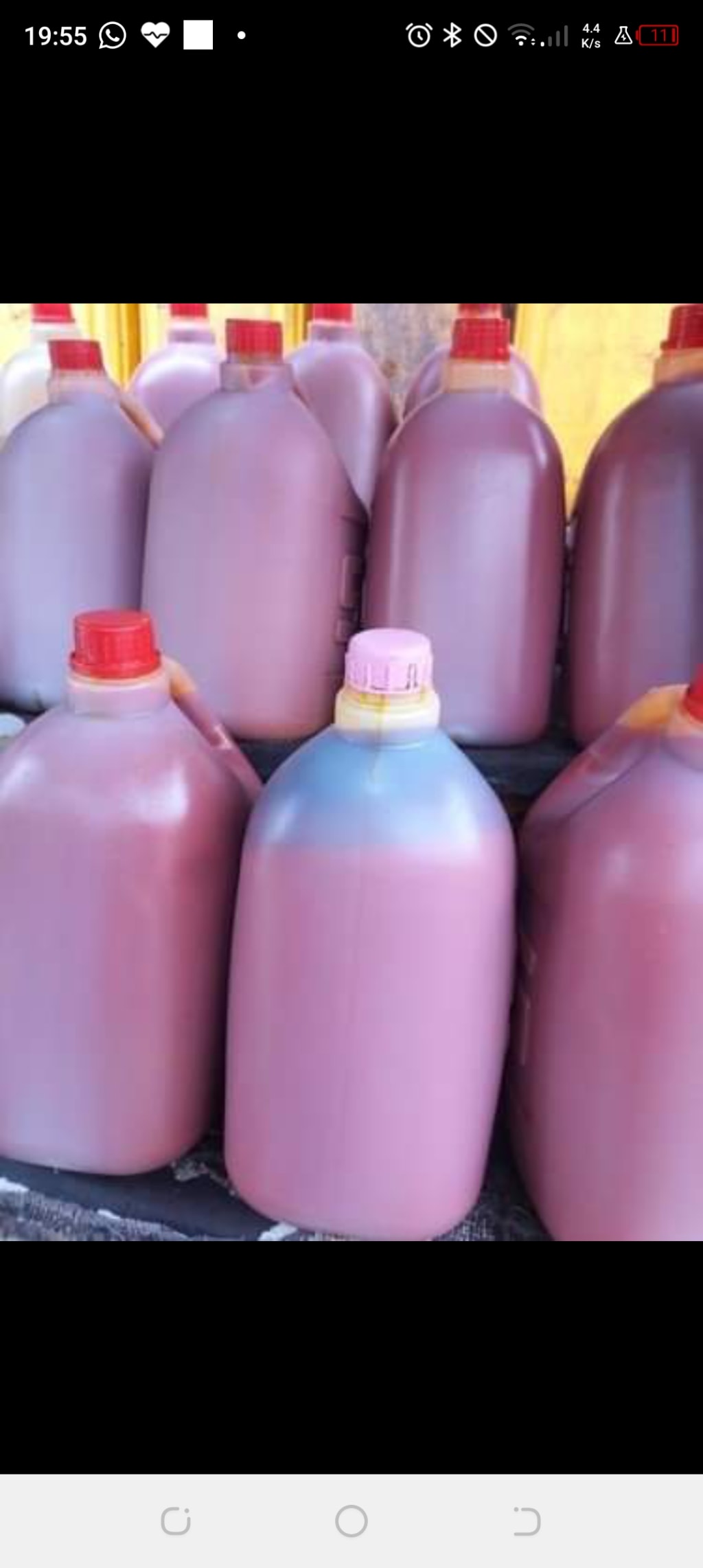African Cultural Icons.
The Ritualistic significance of Palm oil.

Palm oil is a type of edible vegetable oil that is derived from the fruit of oil palm trees, specifically the African oil palm (Elaeis guineensis) and the American oil palm (Elaeis oleifera). It is one of the most widely used vegetable oils globally and has a range of culinary and industrial applications. Here are some key points about palm oil:
1. Production: Palm oil is primarily produced in tropical regions, with the largest producers being Indonesia and Malaysia. Other countries, such as Nigeria, Thailand, and Colombia, also contribute to global palm oil production.
2. Versatility: Palm oil is highly versatile and used in a wide range of products, including cooking oil, processed foods, baked goods, cosmetics, soaps, and biofuels. Its high melting point and stable composition make it suitable for various industrial applications.
3. Nutritional Value: Palm oil is rich in saturated and unsaturated fats, and it contains a balance of monounsaturated and polyunsaturated fats. It is also a good source of vitamin E and antioxidants.
4. Controversy: The production of palm oil has been a subject of controversy due to its environmental and social impacts. The expansion of oil palm plantations has been linked to deforestation, habitat destruction, loss of biodiversity, and greenhouse gas emissions. Additionally, there have been concerns about the treatment of workers on palm oil plantations.
5. Sustainability: Efforts have been made to promote sustainable palm oil production through certification schemes like the Roundtable on Sustainable Palm Oil (RSPO). These initiatives aim to minimize the negative environmental and social effects associated with palm oil production.
6. Substitutes: In response to concerns about palm oil, some consumers and manufacturers have sought alternatives, such as other vegetable oils like soybean, canola, or sunflower oil. However, these substitutes also have their own environmental and social considerations.
7. Culinary Use: Palm oil is commonly used in cooking, especially in regions where it is produced. It has a distinctive red-orange color due to its high beta-carotene content and imparts a unique flavor to dishes.
8. Health Considerations: While palm oil is a source of dietary fat, its high saturated fat content has led to concerns about its impact on heart health. Some health experts advise moderation in consumption.
9. Biofuels: Palm oil is used as a feedstock for biodiesel production, contributing to the renewable energy sector. However, the environmental sustainability of palm oil-based biofuels is a subject of debate.
10. Labeling: In some regions, food products containing palm oil are required to be labeled as such, allowing consumers to make informed choices.
In recent years, there has been a growing awareness of the environmental and ethical issues associated with palm oil production. As a result, consumers, businesses, and governments have been working together to find ways to make palm oil production more sustainable and responsible. This includes supporting certified sustainable palm oil and encouraging transparency in the supply chain.
Palm oil is produced traditionally or industrially. But what ever the source, it is used for may traditional rites and rituals. The CDC is the main producer for palm oil Cameroon. The palms grow in big plantations in the south west and littoral provinces of Cameroon. Laborers clear the plantations, harvest the nuts and take them to the factory where machines cook and press the nuts to extract the oil. The liquid is bottled and exported to foreign countries while some is consumed locally.
On the other hand villagers produce the oil they use in their kitchen daily by themselves. In the south west province, the palm nuts are boiled and pounded in mortals, water is add and then the pulp is extracted. This pulp is boiled under high temperatures for water to evaporate leaving the oil. This procedure is easier, in Ndop and Batibo and Mbenwgi in the Northwest province of Cameroon, the nuts are boiled and trampled upon with bare feet to remove the pulp. The pulp is boiled, and the oil retained. This oil is now ready to be used for cooking but most especially for rites and rituals.
About the Creator
Tifuh Awah
Welcome to my corner of Vocal! I belief that words have the power to inspire, connect, and change the world. Here, I make sense of the world and share my view. Please, support me Let's take on a literary journey to transform and heal.
Enjoyed the story? Support the Creator.
Subscribe for free to receive all their stories in your feed. You could also pledge your support or give them a one-off tip, letting them know you appreciate their work.





Comments
There are no comments for this story
Be the first to respond and start the conversation.